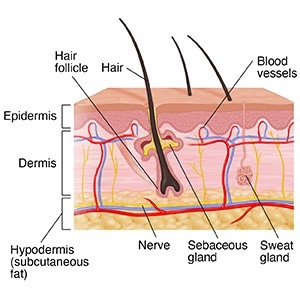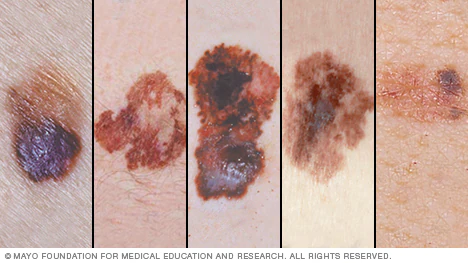Did you know that the largest organ of the human body is...the skin?
You have three layers of skin. The skin protects you from mechanical, thermal, biological, or chemical hazards. It prevents loss of moisture and protects you from the effects of the sun. It regulates body temperature, and enables the sense of touch to be identified. The average person has about 21 square feet of skin which weighs roughly 9 lbs. There are about 300 million skin cells on the average body?
With all of that being said, why do we reward this tissue by working long hours in the garden that is actually baking our skin and traumatizing it by being in the sun?
It starts like this: the skin can be overexposed to UV (ultraviolet) light that comes from the sun or a tanning lamp. There is both UV-A and UV-B wavelengths of light that penetrate to the deep layers of the skin and damage it. The damages is the result of the tissue's triggering the immune system that turns the tissue red from increased blood flow. If the exposure is intense enough, it will lead to blistering and the eventual peeling off of the top layer of skin. More significantly, the base cells can become permanently damaged.
The three main layers of skin are: the epidermis (top layer), the dermis and the hypodermis (below the dermis). The epidermis has five layers of its own, yet is the thinnest layer that protects you from everything. The epidermis has melanin cells in it that darken the skin. The more you have of it, the more protection you have. That is not to say that people with very dark skin are immune to sunburn, because they are not. They have resistance but they can burn and still need to protect themselves from UV rays. Below is a diagram of a skin section.
PhotoCredit: John Hopkins Medicine
The problem starts with repeated sunburns. Although some people are able to tan from progressive, and longer periods of exposure, most people with very little melanin will likely suffer deep damage to their skin.
Here is the bottom-line: much like gloves that protect you from many mechanical hazards, sunscreens, (both chemical as well as fabric) can protect you from possible damage to your skin. The damage can be in the form of not only sunburn but of skin cancer.
Sun Protection Factor (SPF) is a gauge of how much protection you have from the Sun. An SPF of 30 means it should take you 30 times longer to get sun burned from the UV-B rays than if you were not wearing it. It blocks about 97% of the rays. UV-B rays are believed to be the rays that cause the most damage to the skin. SPF of 50 should block 98% of the rays.
The bad news is that with repeated sunburns, there is an increased risk to permanently damaging the skin. That could go from wrinkles to cancer. Skin cancers have different appearances from moles or other skin blemishes. They can be: red, tan, white, brown, pink or black colors, bumps, or scaly patches. Seeing your doctor to determine which is which is crucial to having a successful treatment. Below are images of what skin cancer might look like. Have your doctor check out ANYTHING that is new on your skin is the key to a successful treatment of the potential cancer. Below are just a sample of what can appear on your skin.
The American Academy of Dermatology advises watching skin spots for the “A,B,C,D,E” of Cancers.
- Asymmetry.-The Blemish is NOT round.
- Border irregularity.-The edges do not have a consist form.
- Color changes.- a mole or blemish begins to change color.
- Diameter greater than 1/4 inch (about 6 millimeters) and are getting bigger.
- Evolving. Size, color and shape are visibly changing over time.
Lastly, like wearing gloves, wear eye protection in the way of polarized sunglasses. The type that wrap around your eyes are preferred rather than just flat lens that do not block the light from the top or sides. They can help prevent a serious eye cancer. They can also protect you from mechanical injury that could come from a thorn or branch.
There was some concern in some circles that the sunglasses would dilate the pupils and cause damage to the lens. That has not been shown to be true. The protection from the polarized lens outweighs any problems from pupils that might be open wider.
So, if you like it hot outside, please be careful to protect your health from excessive sun damage. I am a cancer survivor as I had sunburn often as a boy. The only warning that I listened to was from my sister. When I was very red from exposure she would say, “Get some baby lotion on, you are starting to smell like bacon.” Did anyone else have a wonderful sister like that?
Napa Master Gardeners are available to answer garden questions by email: mastergardeners@countyofnapa.org. or phone at 707-253-4143. Volunteers will get back to you after they research answers to your questions.
Visit our website: napamg.ucanr.edu to find answers to all of your horticultural questions.

